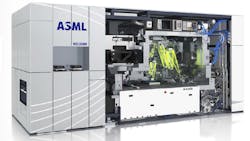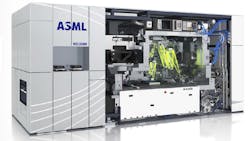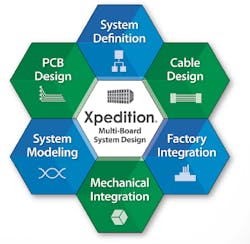Systems often incorporate many boards of various types and configurations—from tiny sensor and control nodes to highly integrated gateways. Examples range for automotive applications to ASML's Semiconductor EUV (extreme ultraviolet) lithography platform (Fig. 1). ASML used Mentor Graphics' latest incarnation of Xpedition Multi-Board Systems design tools to design the system, including boards and cabling.
Xpedition Multi-Board Systems design tools is a collection of integrated tools (Fig. 2). They address system design and modeling, PCB design, and cable design. These tools are linked via a common data exchange so developers do not have to resort to shared documents and spreadsheets to collaborate. The collaboration tools are built into the design tools. This integration extends to many third-party tools for factory and mechanical MCAD design using common data exchange formats.
The system automatically synchronizes data exchange when changes are made, such as in the design of a connector on a board that would affect the cable used to link it to another board. Changes can be batched for approval, allowing for more effective parallel collaboration with an automatic audit trail requiring minimal user interaction. The approach minimizes manual data handling that is typical of a shared document approach.
Xpedition starts with system design and partitioning tools used for high-level system design. The drag-and-drop interface can automatically insert connectors on boards and transform nets to wired cables. Connectivity management and cable design are key components of the system (Fig. 3). It uses parameterized connector creation with automated making and pin pairing. The tools support multi-net and multi-wire connections. It helps in optimizing for cable size and weight and it can flatten 3D MCAD routing designs for simplified examination. The tools can also generate an electro-mechanical bill-of-materials (BOM).
There is a range of co-simulation tools including power and thermal tool integration. Simulations can vary in focus and depth depending upon the tool providing more efficient examination at the desired level of simulation. Very detailed, full system simulations tend to be impractical and unnecessary. More focused or high-level simulations run faster and provide the type of information designers find useful.
A multi-system approach helps eliminate problems such as mating errors on connectors and cables, change transfer errors, and data duplication. It also greatly simplifies system and connectivity verification while reducing the user logistics. There is a web-based collaboration client that is often more convenient to use for those not regularly using the design creation tools.
The system supports import and export of architecture IP using Visio data files. This is done by attaching characteristics to system elements.
About the Author
William G. Wong
Senior Content Director - Electronic Design and Microwaves & RF
I am Editor of Electronic Design focusing on embedded, software, and systems. As Senior Content Director, I also manage Microwaves & RF and I work with a great team of editors to provide engineers, programmers, developers and technical managers with interesting and useful articles and videos on a regular basis. Check out our free newsletters to see the latest content.
You can send press releases for new products for possible coverage on the website. I am also interested in receiving contributed articles for publishing on our website. Use our template and send to me along with a signed release form.
Check out my blog, AltEmbedded on Electronic Design, as well as his latest articles on this site that are listed below.
You can visit my social media via these links:
- AltEmbedded on Electronic Design
- Bill Wong on Facebook
- @AltEmbedded on Twitter
- Bill Wong on LinkedIn
I earned a Bachelor of Electrical Engineering at the Georgia Institute of Technology and a Masters in Computer Science from Rutgers University. I still do a bit of programming using everything from C and C++ to Rust and Ada/SPARK. I do a bit of PHP programming for Drupal websites. I have posted a few Drupal modules.
I still get a hand on software and electronic hardware. Some of this can be found on our Kit Close-Up video series. You can also see me on many of our TechXchange Talk videos. I am interested in a range of projects from robotics to artificial intelligence.





